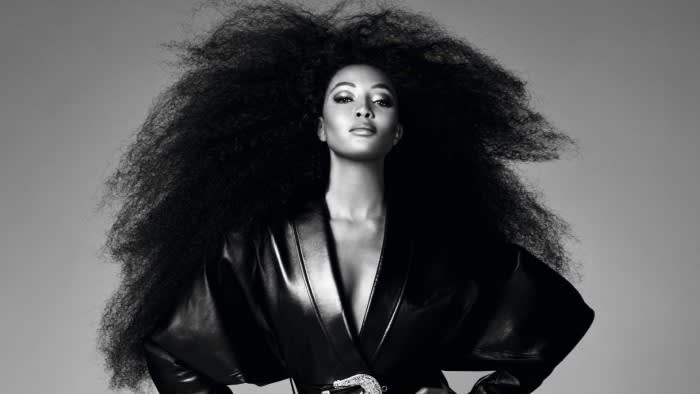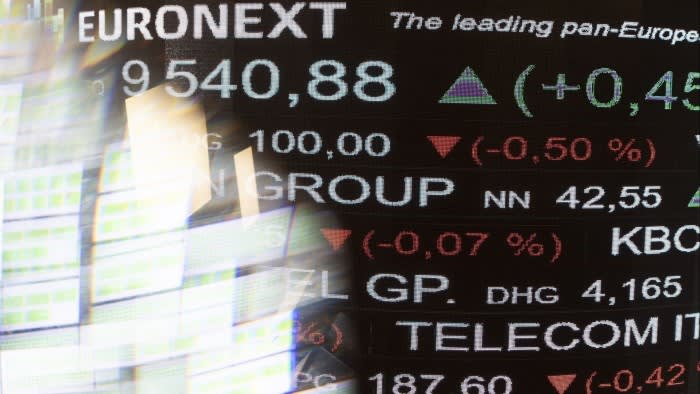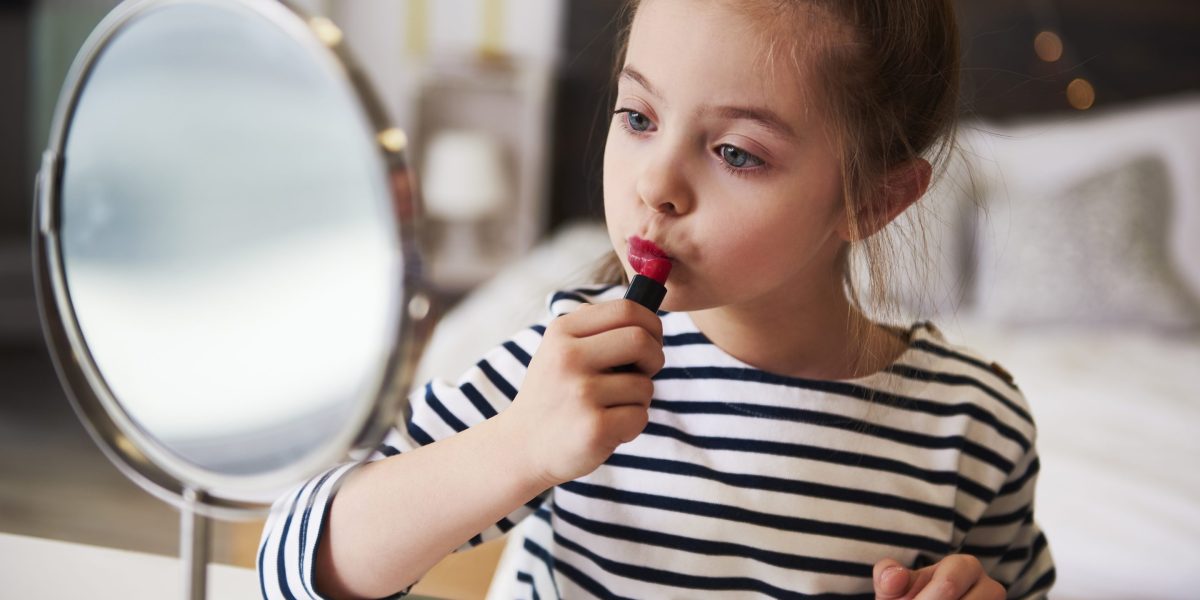Next week, Naomi Campbell becomes the first model ever honoured with a retrospective at the Victoria and Albert Museum — Naomi: In Fashion, which it seems she always is. The clothes chart her life and career — the latter beginning in 1986 when she was aged 15, the year she first appeared on the cover of a magazine (Elle), a month before her 16th birthday. And she’s still walking catwalks and gracing magazine covers today.
There are a few other models that could warrant the same attention (most obviously Kate Moss, whose personal style influenced entire generations). But Campbell’s career and life has all the recipes for a blockbuster exhibition. Namely, longevity, drama and genuine struggle.
“We both came from south London. She came from a single-parent family. It’s not the easiest ride,” says the designer John Galliano, a close friend of Campbell for decades. “I think one has this driving force: the determination to be the best and work at being the best. She’s had to work hard.” And the world noticed: few other models have made front pages by a catwalk stumble, or audaciously transformed their community service stint (at New York’s Department of Sanitation, in 2007) into a Steven Klein-lensed fashion shoot. Campbell is truly one of a kind.

Some may ask if Campbell warrants the significance of a museum exhibition, an honour afforded a chosen few. She has had controversial moments, with widely publicised court appearances including those for misdemeanour assault and accepting “blood diamonds” from former Liberian president Charles Taylor. Yet Campbell’s cultural importance is unassailable. She was the first Black woman ever photographed on the cover of Vogue France, in August 1988, at the insistence of Yves Saint Laurent, a friend and mentor.
In 1991 she was also the first Black model featured on the cover of Time magazine, where she represented the phenomenon of the supermodels. Campbell was often the first, in that respect. “That one token girl,” was how Campbell described herself, back in the day. She also recalled the story of Eunice Johnson, of Ebony magazine — “she used to have to buy all her couture pieces because magazines wouldn’t loan it to her for shoots,” Campbell says. It was the start of a touring fashion show programme known at the Ebony Fashion Fair, which brought Parisian haute couture to millions of women of colour.
The racism Campbell experienced — or rather, in her telling, refused to accept — underpins her career and emphasises her significance. She was not the first model of colour to achieve high fashion fame. When we spoke, Campbell reeled of a litany of women who she met, and who tutored her in her career: “Amalia, Katoucha, Dalma, Violetta — oh, my goodness! — Sonia Cole, Anna Bayle, Mounia, Khadija, Iman, Kirat” — many names forgotten outside of the geekier realms of the fashion industry.


Campbell has, in turn, laid the ground for the careers of a multitude of models of colour who followed her. “She’s set the pace and opened so many doors for young girls today, from actresses to singers. She’s a shining beacon of inspiration,” says Galliano. “And it didn’t come easy. She’s fought for everything she’s got today, and that’s impressive.” Campbell is famous, perhaps infamous, but she is also a pioneer in the fashion industry, and her visibility matters. That’s part of what this show is about.
The exhibition is, also, fundamentally about clothes. There are around 100 outfits on display, many from Campbell’s personal wardrobe as well as those that spotlight her relationship with designers and presence at some of the most significant “fashion moments” of the past four decades.

I was invited to interview Campbell about just that, for the catalogue produced by the Victoria and Albert Museum to accompany Campbell’s exhibition, so we arranged to meet at the Dorchester hotel. Campbell was roughly three hours late for our 90-minute interview. Which, oddly, has become part of the mystique around her (she was also an hour and a half late for the press conference announcing the exhibition in March). It’s something often commented on in interviews, as it was with Elizabeth Taylor. And there were rumours certain designers cut Campbell from their catwalk shows when she rocked up too late for hair and make-up backstage.
Nevertheless, that is something designers universally countered in my conversations with them. Indeed, every designer I approached agreed to speak, most effusively. Their definition of supermodel seemed to be that Campbell was, simply, great at her job. Stefano Gabbana said: “she is a free woman, upstream, gifted with a unique beauty, strong and determined, able to influence the taste of generations of girls.” His creative partner Domenico Dolce added that “Naomi is like a canvas on which we can express our creativity without limits.”


Andreas Kronthaler, of Vivienne Westwood — from whose “super-elevated” platforms Campbell famously tumbled in 1993 — said that when he first met her, he was so overwhelmed by her beauty that he burst into tears. John Galliano calls her trademark panther-like walk “just mind-blowing.” “She is iconic,” was the simple declaration of Pierpaolo Piccioli, the former creative director of Valentino. “There’s no facet of Naomi that isn’t an energy-filled inspiration,” said Marc Jacobs.
Unfortunately, the one designer who couldn’t speak on Campbell was arguably the one she was closest to, the late Azzedine Alaïa. He was the one she called “papa” as the first in a string of father figures she adopted in her life, including Quincy Jones and Nelson Mandela. Since she was a teenager, Campbell would often stay at Alaïa’s Parisian headquarters, where the designer lived and worked.
A significant number of outfits in the exhibition are by Alaïa, reflecting the intimacy of their relationship. The house insisted on displaying them on specially made mannequins which, Alaïa himself once told me, were originally based on Campbell’s pneumatic figure.


“He was very protective of me and the jobs that I chose and the people that I worked with. And if anyone disrespected me, they’d get a phone call, especially when I was 17,” says Campbell, of her time with Alaïa. “I learned a lot from him. I never knew who was going to come to lunch or dinner. That was the other thing: besides him making all these incredible, magnificent pieces, he always would cook dinner himself, or for me. And then we would work.”
Alaïa was an exceptionally close friend of Campbell’s, but her relationship with him also mimics the intimacy of her interaction with many of fashion’s most legendary names. When I huddled with Campbell in that plush Dorchester suite, it was actually to talk, specifically, about clothes. We had a rack of greatest hits — of her wardrobe, of her modelling career, and of the fashions of the past 40 years, all in one.

There was a plush leopard-patterned knitted Azzedine Alaïa bodysuit that was hand-fitted to Campbell’s figure. There was a Gianni Versace-designed dress, patterned with Marilyn Monroe’s face as painted by Andy Warhol (“I loved it so much, after [the show], he just said, ‘Keep it,” she recalls). There was a parma-violet colour tweed Chanel suit with a micro-mini skirt (“Karl was very personable in a sense that he knew that I loved purple. And so everything that was ever purple in Chanel he would give it to me.”) It was Campbell’s life and career laid out in cloth, many items one-offs, made especially for her. This exhibition is the first time many will have been seen.
Campbell’s name alone is enough to guarantee crowds — but are they coming for the clothes, or the story of the woman inside them? Perhaps it can be both, making this exhibition a rare example where a compelling life-story is tied to genuinely progressive and museum-worthy fashion looks that defined their times and the woman that brought them to life.
Naomi: In Fashion opens at the V&A South Kensington from June 22
Find out about our latest stories first — follow @financialtimesfashion on Instagram — and subscribe to our podcast Life and Art wherever you listen



